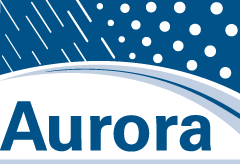Project Details
Aurora Project 2021-06
09/01/20
02/28/23
Federal Highway Administration Aurora Program Transportation Pooled Fund (TPF-5(435))
Researchers
About the research
Department of transportation (DOT) maintenance supervisors utilize a variety of tools including maintenance decision support systems (MDSS) to gain a better understanding of current and future road surface conditions (RSC) during winter weather. MDSS automatically attempt to deduce current RSC based on road weather information system (RWIS) and other data to a greater or lesser degree of accuracy. Although current MDSS implementations present highway camera imagery, they typically do not incorporate automated camera image recognition in order to improve the MDSS assessment of winter RSC. Thus, there can be discrepancies between the road weather conditions in camera images and MDSS RSC assessments. For example, an MDSS assessment may determine that a highway is clear whereas associated camera images show snow or vice versa. Such discrepancies can lead to a loss of confidence, system criticism, and noncompliance with MDSS recommendations. From that point of view, the integration of automated RSC camera image recognition into MDSS implementations can have a number of benefits:
- Better RSC assessment performance
- Better road treatment recommendations owing to better RSC identification
- Improved MDSS use and compliance with system recommendations owing to user confidence
Recent research in RSC identification has applied convolutional neural networks (CNN) and related techniques to the winter RSC identification problem. The National Center for Atmospheric Research (NCAR) is interested in transitioning these automated RSC identification techniques from the research community to the DOT community. Since NCAR has significant experience in the research-to-operations arena, the NCAR team worked with Aurora Program members to develop a set of recommendations for transitioning the relevant technology to MDSS applications.
Even though recent research efforts seem quite successful, the NCAR team was also interested in the potential to improve the initial CNN RSC identification by incorporating additional relevant data such as the following:
- RWIS precipitation/temperature data
- Vehicle speed/volume data
